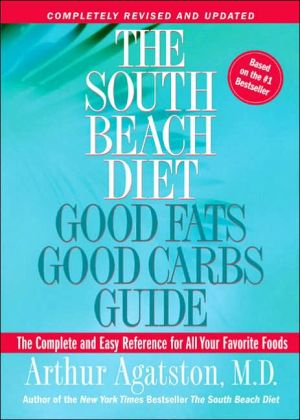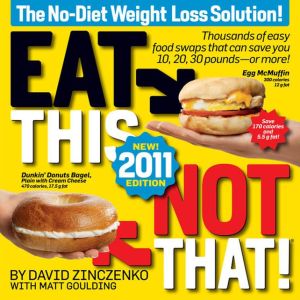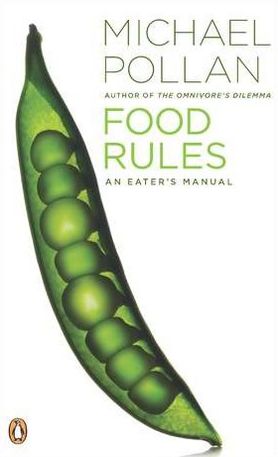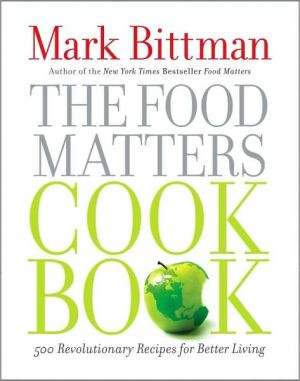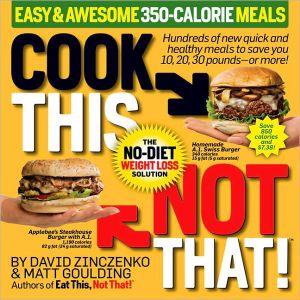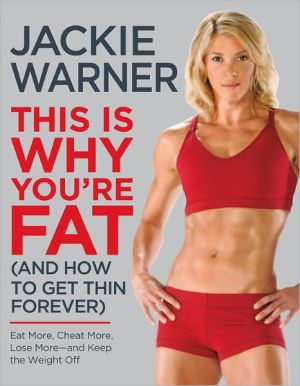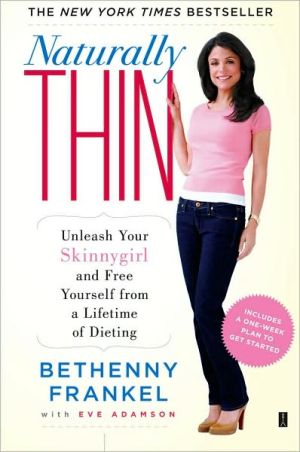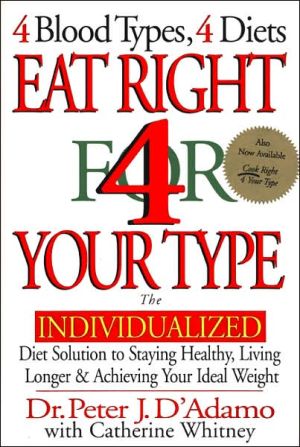South Beach Diet Good Fats/Good Carbs Guide: The Complete and Easy Reference for All Your Favorite Foods
Based on the nation's #1 bestseller\ Published in January 2004, The South Beach Diet Good Fats/Good Carbs Guide has sold more than three million copies and has continuously topped national bestseller lists. An essential tool for success, the completely revised and updated guide will feature a new, more user-friendly format and an expanded list of foods, as well as the most up-to-the-minute new information on nutrition and healthy eating to aid the now millions of early adopters.\ The new...
Search in google:
Based on the nation's #1 bestsellerPublished in January 2004, The South Beach Diet Good Fats/Good Carbs Guide has sold more than three million copies and has continuously topped national bestseller lists. An essential tool for success, the completely revised and updated guide will feature a new, more user-friendly format and an expanded list of foods, as well as the most up-to-the-minute new information on nutrition and healthy eating to aid the now millions of early adopters.The new edition will include:o An expanded nutritional breakdown: total carbs and net carbs, total fat and saturated fat, fiber, and sugar.o More food listings including meal replacement bars, other convenience foods, healthy fast-food menu items, and beverages.o FAQs organized by phase and designed to answer dieters' most common questions.o A foreword by Dr. Agatston detailing new research and outlining the changes to the diet.o Each food listing will now have a recommendation by phase. For example, bananas might be a food to avoid in the first 2 weeks of Phase One but will be a food to enjoy in Phase Two.
\ Your Road Map to South Beach Success \ Welcome! I'm glad you've decided to try the South Beach Diet and have taken the first step toward a future filled with health and vitality.\ The South Beach Diet can't be classified as a low-carb diet, a low-fat diet, or a high-protein diet. Its rules: Consume the right carbs and the right fats and learn to snack strategically. The South Beach Diet has been so widely successful because people lose weight without experiencing cravings or feeling deprived, or even feeling that they're on a diet. It allows you to enjoy "healthy" carbohydrates, rather than the kinds that contribute to weight gain, diabetes, and cardiovascular disease. You can eat a great variety of foods in a great variety of recipes. This prevents repetition and boredom, two obstacles to long-term success. Our goal is that the South Beach Diet becomes a healthy lifestyle, not just a diet. The purpose of this guide is to help you to accomplish this with ease. Read on for more on the principles of the diet, how to use this Guide, and shopping and dining-out tips.\ Good Fats, Bad Fats\ Fat is an important part of a healthy diet. There's more and more evidence that many fats are good for us and actually reduce the risk of heart attack and stroke. They also help our sugar and insulin metabolism and therefore contribute to our goals of long-term weight loss and weight maintenance. And because good fats make foods taste better, they help us enjoy the journey to a healthier lifestyle. But not all fats are created equal--there are good fats and bad fats.\ "Good" fats include monounsaturated fats, found in olive and canola oils, peanuts and other nuts, peanut butter, and avocados. Monounsaturated fats lower total and "bad" LDL cholesterol--which accumulates in and clogs artery walls--while maintaining levels of "good" HDL cholesterol, which carries cholesterol from artery walls and delivers it to the liver for disposal.\ Omega-3 fatty acids--polyunsaturated fats found in coldwater fish, canola oil, flaxseeds, walnuts, almonds, and macadamia nuts--also count as good fat. Recent studies have shown that populations that eat more omega-3s, like Eskimos (whose diets are heavy on fish), have fewer serious health problems like heart disease and diabetes. There is evidence that omega-3 oils helps prevent or treat depression, arthritis, asthma, and colitis and help prevent cardiovascular deaths. You'll eat both monounsaturated fats and omega-3s in abundance in all three phases of the Diet.\ "Bad fats" include saturated fats--the heart-clogging kind found in butter, fatty red meats, and full-fat dairy products.\ "Very bad fats" are the manmade trans fats. Trans fats, which are created when hydrogen gas reacts with oil, are found in many packaged foods, including margarine, cookies, cakes, cake icings, doughnuts, and potato chips. Trans fats are worse than saturated fats; they are bad for our blood vessels, nervous systems, and waistlines.\ As this Guide went to press, the Food and Drug Administration (FDA) ruled that by 2006, food manufacturers must list the amount of trans fats in their products on the label. (The natural trans fats in meat and milk, which act very differently in the body than the manmade kind, will not require labeling.) Until then, here are a few ways to reduce your intake of trans fats and saturated fats, South Beach style.\ Go natural: Limit margarine, packaged foods, and fast food, which tend to contain high amounts of saturated and trans fats. Make over your cooking methods: Bake, broil, or grill rather than fry. Lose the skin: Remove the skin from chicken or turkey before you eat it. Ditch the butter: Cook with canola or olive oil instead of butter, margarine, or lard. Slim down your dairy: Switch from whole milk to fat-free or 1% milk.\ Good Carbs, Bad Carbs\ Carbohydrates, foods that contain simple sugars (short chains of sugar molecules) or starches (long chains of sugar molecules), have been blamed for our epidemic of obesity and diabetes. This is only partially true, because there are both good and bad carbohydrates. The good carbs contain the important vitamins, minerals, and other nutrients that are essential to our health and that help prevent heart disease and cancer. The bad carbs, which have been consumed by Americans in unprecedented quantities (largely in an attempt to avoids fats), are the ones that have resulted in the fattening of America. Bad carbs are refined carbs, the ones where digestion has begun in factories instead of in our stomachs. The good carbs are the ones humans were designed to consume--the unrefined ones that have contributed to our health since we began eating! Unrefined carbohydrates are found in whole, natural foods, such as whole grains, legumes, rice, and starchy vegetables. They're also called complex carbohydrates, so named for their molecular structure. Besides being packed with fiber, vitamins, and minerals, good carbs take longer to digest--a good thing, as you'll soon see.\ Refined carbohydrates, on the other hand, are found in packaged, processed foods, such as store-bought baked goods, crackers, pasta, and white bread.\ Refined carbohydrates are made with white flour and contain little or no fiber. In fact, many products made with white flour are advertised as fortified with vitamins and minerals, because the process of turning grain into white flour strips away its fiber and nutrients. One of our South Beach Diet rules is to avoid foods labeled as "fortified." Current evidence is that fortification with vitamins does not recreate the benefits of the natural vitamins that have been removed.\ Despite the fact that good carbs are a critical part of a healthy diet, the typical American diet is filled with the bad kinds. And when we're overweight as a result of a diet laden with bad carbs, our bodies' ability to process all carbohydrates goes awry. To understand why, you need to understand the role of the hormone insulin.\
